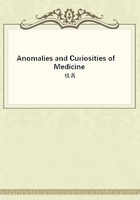
第42章
The results to the fetus of injuries to the pregnant mother are most diversified. In some instances the marvelous escape of any serious consequences of one or both is almost incredible, while in others the slightest injury is fatal. Guillemont cites the instance of a woman who was killed by a stroke of lightning, but whose fetus was saved; while Fabricius Hildanus describes a case in which there was perforation of the head, fracture of the skull, and a wound of the groin, due to sudden starting and agony of terror of the mother. Here there was not the slightest history of any external violence.
It is a well-known fact that injuries to the pregnant mother show visible effects on the person of the fetus. The older writers kept a careful record of the anomalous and extraordinary injuries of this character and of their effects. Brendelius tells us of hemorrhage from the mouth and nose of the fetus occasioned by the fall of the mother; Buchner mentions a case of fracture of the cranium from fright of the mother; Reuther describes a contusion of the os sacrum and abdomen in the mother from a fall, with fracture of the arm and leg of the fetus from the same cause;Sachse speaks of a fractured tibia in a fetus, caused by a fall of the mother; Slevogt relates an instance of rupture of the abdomen of a fetus by a fall of the mother; the Ephemerides contains accounts of injuries to the fetus of this nature, and among others mentions a stake as having been thrust into a fetus in utero; Verduc offers several examples, one a dislocation of the fetal foot from a maternal fall; Plocquet gives an instance of fractured femur; Walther describes a case of dislocation of the vertebrae from a fall; and there is also a case of a fractured fetal vertebra from a maternal fall. There is recorded a fetal scalp injury, together with clotted blood in the hair, after a fall of the mother: Autenrieth describes a wound of the pregnant uterus, which had no fatal issue, and there is also another similar case on record.
The modern records are much more interesting and wonderful on this subject than the older ones. Richardson speaks of a woman falling down a few weeks before her delivery. Her pelvis was roomy and the birth was easy; but the infant was found to have extensive wounds on the back, reaching from the 3d dorsal vertebra across the scapula, along the back of the humerus, to within a short distance of the elbow. Part of these wounds were cicatrized and part still granulating, which shows that the process of reparation is as active in utero as elsewhere.
Injuries about the genitalia would naturally be expected to exercise some active influence on the uterine contents; but there are many instances reported in which the escape of injury is marvelous. Gibb speaks of a woman, about eight months pregnant, who fell across a chair, lacerating her genitals and causing an escape of liquor amnii. There was regeneration of this fluid and delivery beyond term. The labor was tedious and took place two and a half months after the accident. The mother and the female child did well. Purcell reports death in a pregnant woman from contused wound of the vulva. Morland relates an instance of a woman in the fifth month of her second pregnancy, who fell on the roof of a woodshed by slipping from one of the steps by which she ascended to the roof, in the act of hanging out some clothes to dry. She suffered a wound on the internal surface of the left nympha 1 1/2 inch long and 1/2 inch deep. She had lost about three quarts of blood, and had applied ashes to the vagina to stop the bleeding. She made a recovery by the twelfth day, and the fetal sounds were plainly audible. Cullingworth speaks of a woman who, during a quarrel with her husband, was pushed away and fell between two chairs, knocking one of them over, and causing a trivial wound one inch long in the vagina, close to the entrance.
She screamed, there was a gush of blood, and she soon died. The uterus contained a fetus three or four months old, with the membranes intact, the maternal death being due to the varicosity of the pregnant pudenda, the slight injury being sufficient to produce fatal hemorrhage. Carhart describes the case of a pregnant woman, who, while in the stooping position, milking a cow, was impaled through the vagina by another cow. The child was born seven days later, with its skull crushed by the cow's horn.
The horn had entered the vagina, carrying the clothing with it.
There are some marvelous cases of recovery and noninterference with pregnancy after injuries from horns of cattle. Corey speaks of a woman of thirty-five, three months pregnant, weighing 135pounds, who was horned by a cow through the abdominal parietes near the hypogastric region; she was lifted into the air, carried, and tossed on the ground by the infuriated animal. There was a wound consisting of a ragged rent from above the os pubis, extending obliquely to the left and upward, through which protruded the great omentum, the descending and transverse colon, most of the small intestines, as well as the pyloric extremity of the stomach. The great omentum was mangled and comminuted, and bore two lacerations of two inches each. The intestines and stomach were not injured, but there was considerable extravasation of blood into the abdominal cavity. The intestines were cleansed and an unsuccessful attempt was made to replace them. The intestines remained outside of the body for two hours, and the great omentum was carefully spread out over the chest to prevent interference with the efforts to return the intestines.